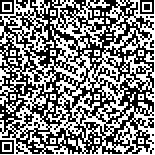| 摘要: |
|
| 关键词: |
| DOI: |
| Received:October 29, 2010Revised:October 29, 2010 |
| 基金项目: |
|
| Comparison of fusion methods based on DST and DBN in human activity recognition |
| Andrei TOLSTIKOV,Xin HONG,Jit BISWAS,Chris NUGENT,Liming CHEN,Guido PARENTE |
| (Institute for Infocomm Research, Networking Protocols Department;School of Computing and Mathematics, University of Ulster) |
| Abstract: |
| Ambient assistive living environments require sophisticated information fusion and reasoning techniques to accurately identify activities of a person under care. In this paper, we explain, compare and discuss the application of two powerful fusion methods, namely dynamic Bayesian networks (DBN) and Dempster-Shafer theory (DST), for human
activity recognition. Both methods are described, the implementation of activity recognition based on these methods is explained, and model acquisition and composition are suggested. We also provide functional comparison of both methods as well as performance comparison based on the publicly available activity dataset. Our findings show that in performance and applicability, both DST and DBN are very similar; however, significant differences exist in the ways the models are obtained. DST being top-down and knowledge-based, differs significantly in qualitative terms, when compared with DBN, which is data-driven. These qualitative differences between DST and DBN should therefore dictate the selection of the appropriate model to use, given a particular activity recognition application. |
| Key words: Dynamic Bayesian networks Dempster-Shafer theory Healthcare monitoring Ambient assisted living Activity recognition |

